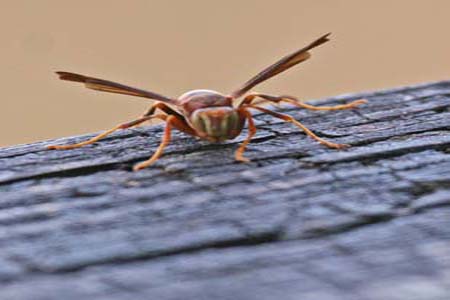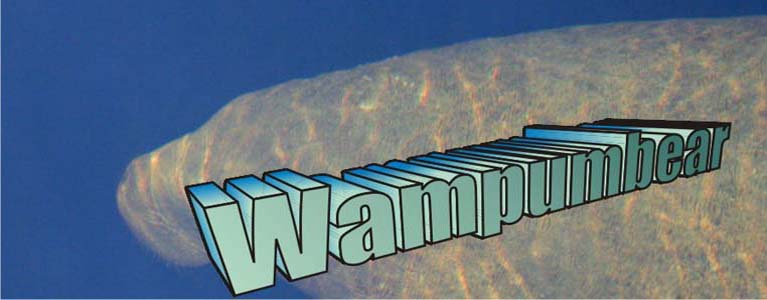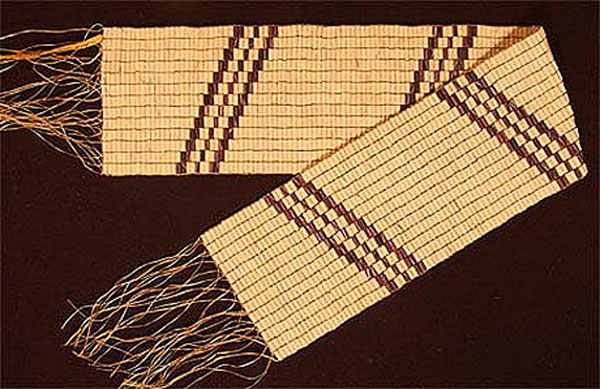 |
 |
 |
Photographs (left to right): Hornet, Manatee, Ibis with Crab: Florida
Wampum Belt Archive
First White Man Sighting Belt
Original Onondaga NYSM 37311
Reproduction (R. D. Hamell) Dec. 07, 2007
Original Size: |
Length: 28.0 inches. Width: 3.5 inches. Rows: 13. |
Reproduction: |
Beaded length: 40.0 inches. Width: 5.8 inches. Total length with fringe: 64.0 inches. |
Beads: |
Rows: 228 rows by 13 beads wide. Total 2,964 beads. |
Materials: |
Warp: Leather. Weave: artificial sinew. |
Description:
It is woven on buckskin thongs with a white background bearing four groups of three purple-beaded diagonal lines. It was made by the Iroquois to commemorate "the first coming of the people with white faces" (Beauchamp, '01, p. 423). We do not know whether this refers to the first sight of Spaniards, French or Dutch. John Buck, who was an Onondaga chief and once wampum keeper, remarked that diagonal stripes across a belt were symbols of agreement that the tribe giving the belt would help the Six Nations in war. These were props, or supports, for the Long House; the symbol of the Confederacy. In this sense the diagonal lines may be considered to signify the willingness of support to the whites by the Indians.
According to the Onondaga Nation (http://www.onondaganation.org/culture/wpm_palefaces.html) this belt displays the willingness of the Onondaga people to help the colonist settle in the territory by providing them with food, medicine, and how to hunt. The beaded two-wide diagonals represent the Onondaga surrounding is single beaded diagonal of the colonist.
Quote Bardeau (2011)
This belt relates to the “first sighting of the people with white faces.” It is said that the belt records the relationship between the Hodinöhsön:ni´ and the first Europeans. It has sets of diagonal lines (representing supports for the longhouse) – two wide lines and a thin line in between. The thin line represents the weakened newcomers to this land who arrived sick, weak and hungry. The two wide lines on either side represent the Hodinöhsön:ni´ agreement to help and support them by teaching them the necessary skills to survive in the new, foreign environment.
Purchased by Henry Carrington from Thomas Webster, Onondaga in 1890/1891.
Reference:
Bardeau, Phyllis Eileen Wms. 2011. Definitive Seneca: It's In The Word. Jaré Cardinal, editor. Seneca-Iroquois Museum Publisher, Salamanca, New York, 443pp.
Beauchamp 1901 #249Clarke, Noah T. 1931 New York State Museum Bulletin No. 288, Fig. 21.
Onondaga Nation. http://www.onondaganation.org/culture/wpm_palefaces.html
Tehanetorens. 1999. Wampum Belts of the Iroquois. Book Publishing Company, Summertown, TN.
 |
 |
 |
 |
 |
 |
 |
 |
|---|

